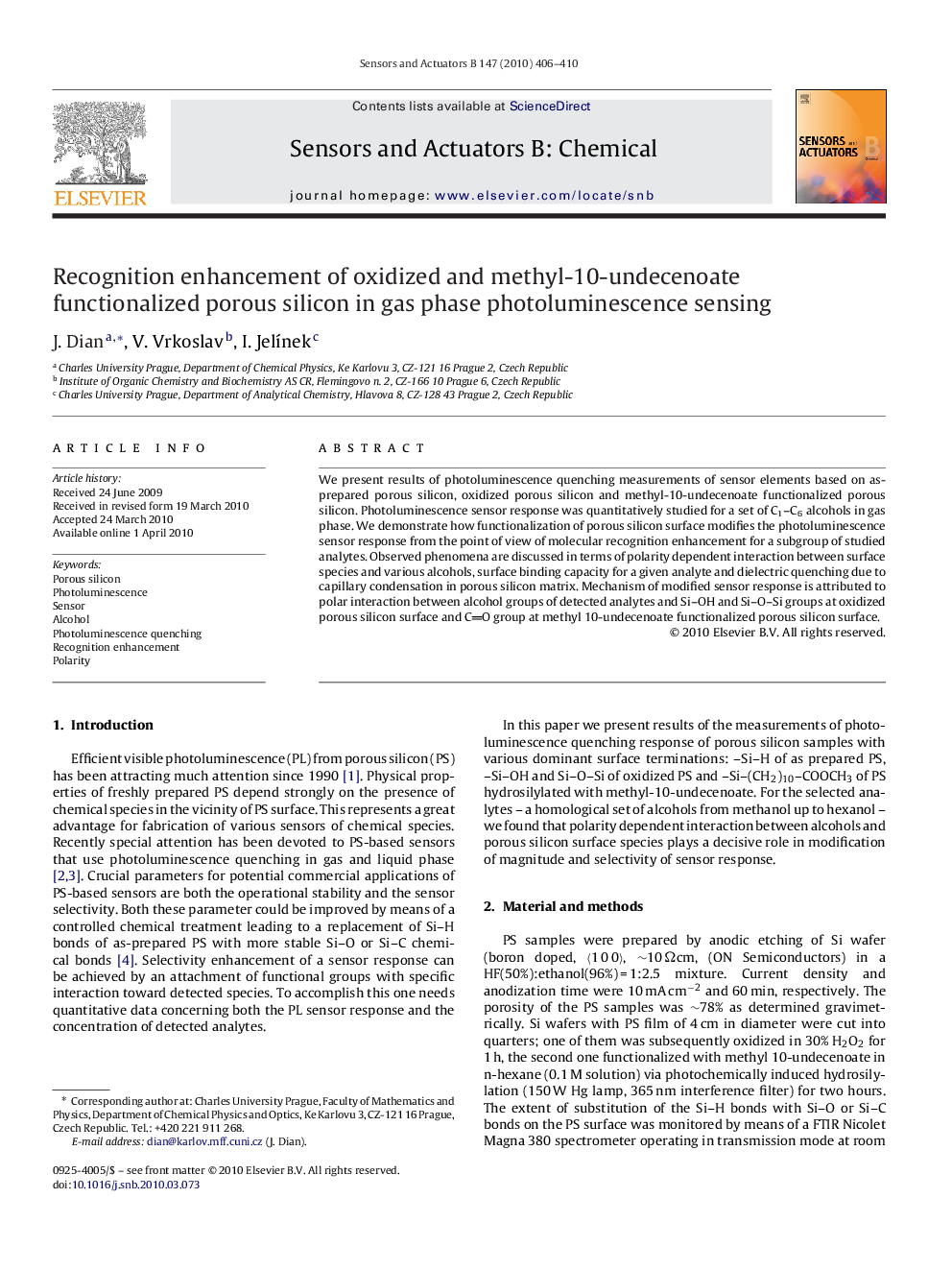| Article ID | Journal | Published Year | Pages | File Type |
|---|---|---|---|---|
| 751254 | Sensors and Actuators B: Chemical | 2010 | 5 Pages |
We present results of photoluminescence quenching measurements of sensor elements based on as-prepared porous silicon, oxidized porous silicon and methyl-10-undecenoate functionalized porous silicon. Photoluminescence sensor response was quantitatively studied for a set of C1–C6 alcohols in gas phase. We demonstrate how functionalization of porous silicon surface modifies the photoluminescence sensor response from the point of view of molecular recognition enhancement for a subgroup of studied analytes. Observed phenomena are discussed in terms of polarity dependent interaction between surface species and various alcohols, surface binding capacity for a given analyte and dielectric quenching due to capillary condensation in porous silicon matrix. Mechanism of modified sensor response is attributed to polar interaction between alcohol groups of detected analytes and Si–OH and Si–O–Si groups at oxidized porous silicon surface and CO group at methyl 10-undecenoate functionalized porous silicon surface.
